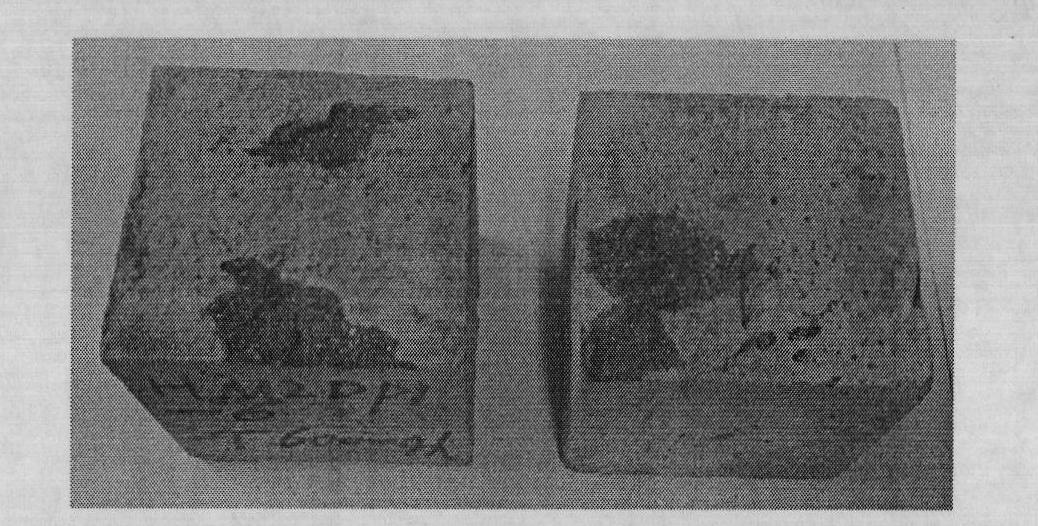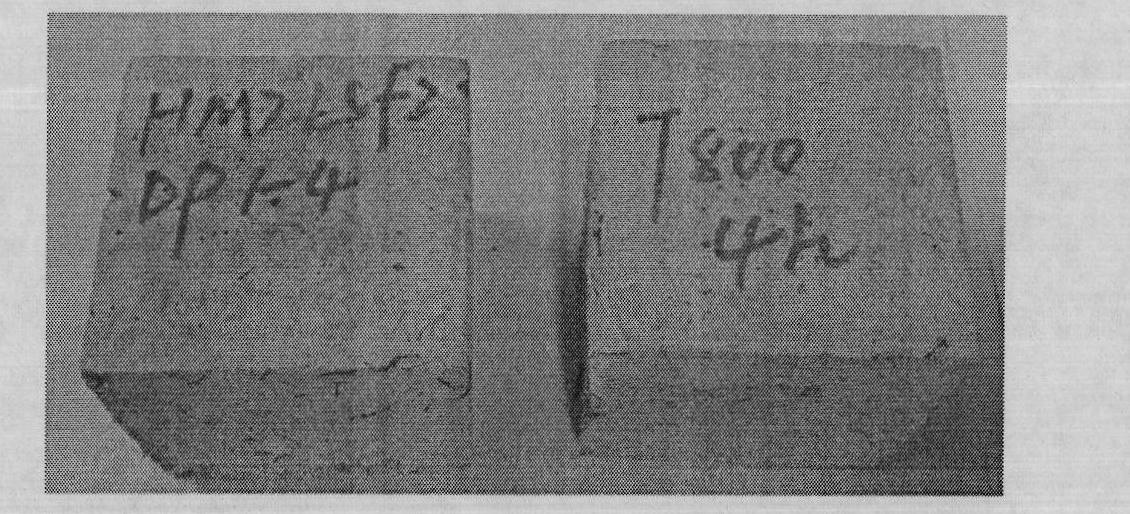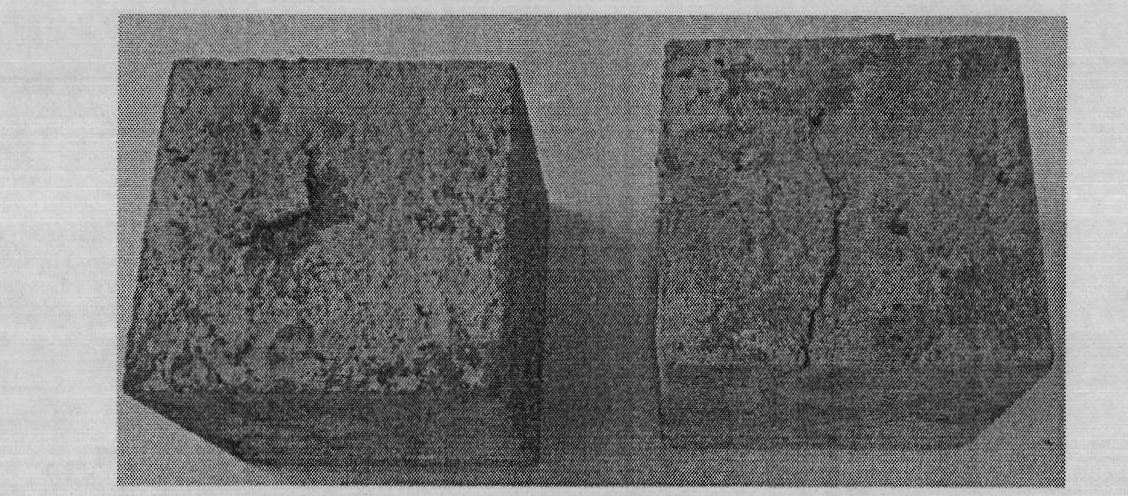Cement-based composite material with high-temperature resistance and superhigh performance and preparation method thereof
An ultra-high performance, composite material technology, applied in climate sustainability, sustainable waste treatment, solid waste management, etc. The effect of bursting, saving cement clinker and avoiding collapse damage
- Summary
- Abstract
- Description
- Claims
- Application Information
AI Technical Summary
Problems solved by technology
Method used
Image
Examples
Embodiment 1
[0031] After weighing the cementitious material and aggregates according to the proportions in Table 1, dry mixing them in a concrete mixer uniformly; after weighing the fibers according to the proportions in Table 1, sprinkle them in the mixer and stir them evenly; mix the water reducing agent and water according to Table 1. After mixing evenly, pour it into the mixer and continue to stir it evenly; pour the mixture obtained after stirring evenly into a cube mold with a side length of 70.7, and vibrate it; put the molded specimen at a temperature of 20±2℃ . The relative humidity is greater than 95% in a standard curing box for 24 hours, then the mold is removed, and the specimen is cured in a standard curing box for more than 30 days. The cementitious material in Example 1 is 52.5 Portland cement, silica fume and slag micropowder with a mass ratio of 5:2:3; the aggregate is yellow sand with a particle size of less than 3 mm; the fiber is polyethylene with a length of 12 mm and...
Embodiment 2
[0034] The cement-based composite material was prepared by repeating the method of Example 1 according to the proportion of each component specified in Table 1, and then repeating the method of Example 1 to carry out the high temperature resistance test on the cement concrete specimen of this example, and the test results are listed in Table 2 . The cementitious material in Example 2 is 52.5 Portland cement, silica fume and slag micropowder with a mass ratio of 5:2:3; the aggregate is yellow sand with a particle size of less than 3 mm; the fiber is a polymer with a mass ratio of 1:12. Vinyl alcohol fiber and steel fiber, polyvinyl alcohol fiber length 12mm, diameter 39μm, steel fiber length 12mm, diameter 0.2mm, tensile strength greater than 1800MPa; water reducing agent is a polycarboxylate superplasticizer with a water reducing rate greater than 40% .
Embodiment 3
[0036] The cement-based composite material was prepared by repeating the method of Example 1 according to the proportion of each component specified in Table 1, and then repeating the method of Example 1 to carry out the high temperature resistance test on the cement concrete specimen of this example, and the test results are listed in Table 2 . The cementitious materials in Example 3 are 52.5 Portland cement, silica fume and slag micropowder with a mass ratio of 5:2:3; the aggregates are yellow sand and stones with a mass ratio of 1:1, and the particle size of the yellow sand is less than 3mm. , the stone is basalt crushed stone with a particle size of less than 16mm; the fiber is a polyvinyl alcohol fiber with a length of 12mm and a diameter of 39μm; the water reducing agent is a polycarboxylate superplasticizer with a water reducing rate greater than 40%.
PUM
| Property | Measurement | Unit |
|---|---|---|
| diameter | aaaaa | aaaaa |
| diameter | aaaaa | aaaaa |
| tensile strength | aaaaa | aaaaa |
Abstract
Description
Claims
Application Information
 Login to View More
Login to View More - R&D
- Intellectual Property
- Life Sciences
- Materials
- Tech Scout
- Unparalleled Data Quality
- Higher Quality Content
- 60% Fewer Hallucinations
Browse by: Latest US Patents, China's latest patents, Technical Efficacy Thesaurus, Application Domain, Technology Topic, Popular Technical Reports.
© 2025 PatSnap. All rights reserved.Legal|Privacy policy|Modern Slavery Act Transparency Statement|Sitemap|About US| Contact US: help@patsnap.com



